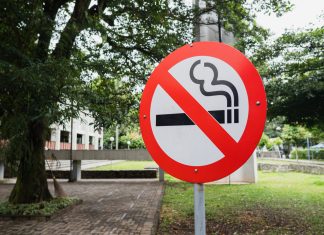By PHILIP HOPKINS
TWO petitions signed by more than 29,000 Victorians that call on the state government to stop the expansion of national parks in Victoria have been extended after overwhelming community demand.
It comes as local prospectors and miners ‘up the ante’ in their bid to stop specific gold mining areas being included in a possible Great Forest National Park.
More than 29,000 people have signed two e-petitions on the issue, which have been sponsored by Member for Narracan, Wayne Farnham, and Member for Eastern Victoria, Melina Bath.
Mr Farnham said it was vital that local communities were given a voice, and that by extending the petition, it would allow more Victorians to have their say.
“Labor’s plans will exclude the traditional pursuits of thousands of Victorians and their families who regularly access our bush for camping, hunting, 4WDing, hiking, mountain biking, prospecting and fishing,” he said.
“The Victorian Liberal and Nationals are committed to ensuring communities can have their say about the proposed National Park areas.
“Alongside the 11,500 signatures on our e-petition in the Lower House, I have thousands more on paper petitions to be submitted also.
“By extending these petitions, we are ensuring that more Victorians can tell the Allan Labor government that they do not support their plan to lock users out from these regions.”
Ms Bath said there were more than 17,500 Victorians who had already signed the Upper House e-petition that she is sponsoring on behalf of bush users.
“They are sending a clear message to Labor: no more new national parks,” she said.
“The Allan Labor government’s prioritisation of green ideology focusing on a lock and leave approach, clearly shows it has zero regard for our bush users.
“Sixty per cent of Department of Energy, Environment and Climate Action staff operate out of metropolitan Melbourne – Labor fails to comprehend that state forests are best managed with boots, not suits.
“Labor’s environmental mismanagement has led to overgrown tracks, increased bushfire risk and a boom in invasive weeds and feral animals. Locking up public land is not a conservation strategy, it’s neglect.”
The president of the West Gippsland branch of the Prospectors and Miners Association, David Saint, emphasised that Gippsland had always been a major gold province in Victoria. Major gold rushes took place in the 1860s and 1870s, when Bairnsdale and Sale were built on gold and the demands it set in train, and Walhalla’s population boomed to 10,000 before 1910, he said in a submission to the inquiry by the Victorian Environmental Assessment Commission.
Mr Saint said rights and liberties, including land access, won at the 1854 Eureka Stockade, were one of the most important issues facing hobbyists and professional prospectors and miners today.
“The Victorian government has already classified prospecting and fossicking as ‘low impact’ recreational pursuits. If we lose further areas, other open goldfields will be inundated by prospectors being forced out of these now closed parks and into decreasing smaller prospecting areas,” he said.
“There are dozens of documents and websites that detail the historic significance of the prospecting areas within the Gippsland region; many are within the ‘immediate’ exclusion zones that have been references by the VEAC reports.
“These are culturally relevant to our historic gold movement, including leases that have been held by members of the PMAV and their forebears.”
Mr Saint said one government publication highlighted about 90 different historical gold sites including their current condition.
“The Geovic site can be used to locate the enormous number and location of current and expired gold mining leases in the area,” he said.
Another publication detailed 114 different sites in East Gippsland, and many others, that had had gold mining leases that still provided opportunities for prospectors and fossickers.
Mr Saint said recreational prospecting was already permitted in some national, state, historic and heritage parks, mainly in central, north-east and western Victoria.
“This recognises that low impact activity of prospecting and fossicking can co-exist within national and historic parks. The PMAV believes that the areas that have ben identified for changes in status from State Forest to ‘exclusion’ zones and national park should not be changed because they are being managed and used well enough now,” he said.
“If the status change does occur, then these areas cannot be locked up.”











